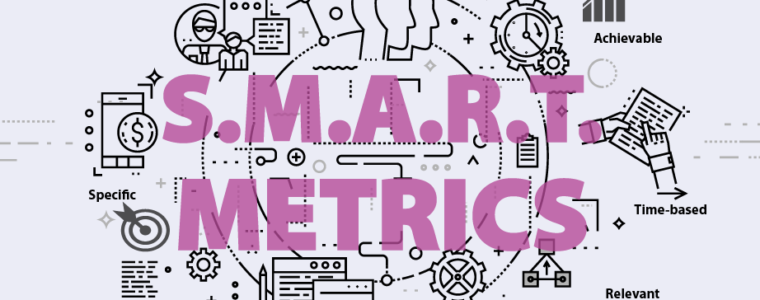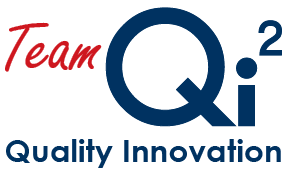
SMART PERFORMANCE METRICS
Team Qi2 has extensive experience in creating new performance metrics for federal government organizations. Specifically, Team Qi2 senior staff have very relevant expert experience from DoD within the Military Health System, Army Medical Department, Army communications and IT professions and well as work with excepted, competitive and collective bargaining unit positions. Given the principles and techniques for creating new performance metrics, Team Qi2 staff can readily partner with organizations to create new performance metrics and assess existing metrics. We are also well-versed in the resources required/preferred to track and measure the metrics at the strategic, operational, and local levels. Our experience includes developing and using The Balance Score Card System and Strategy Maps, using metrics derived from applying Lean Six Sigma techniques, using Key Performance Indicators (KPIs), analyzing Performance Appraisals, using Management Dashboards, conducting Enterprise Risk Management, identifying Process Drivers, capturing and analyzing outcomes data/metrics, analyzing Big Data, and (emerging) using Predictive Analytics. Most importantly, we have experience establishing and maintain an alignment from organizational strategic goals down to individual performance metrics. Team Qi2 is ready to partner with your Organization and staff to create new metrics to comply with Congressional/Executive performance tracking as well for conducting Strategic Planning and executing Continuous Performance Improvement/Change Management.
High performing organizations know themselves better than anyone else. These excellent organizations continuously measure their performance using relevant performance metrics, employing continuous improvement and change management techniques, and holding themselves transparently accountable in order to achieve performance goals and accomplish the mission. Team Qi2 approaches performance metric development from a holistic vantage point aligned with and linked to an organization’s vision, mission, and performance improvement goals. We develop metrics from the bottom up with engagement and approval from the top down. Key stakeholders are involved in all aspects of creating performance metrics. Understanding that complex organization and even some individuals positions involve multiple metrics that may interact, we make maximum use of quantifiable metrics, but include qualitative metrics where appropriate to best reflect actual performance. Our goal is performance metrics that are computable, automated, and fully interoperable with enterprise wide Strategic Planning and Talent Management Systems. Team Qi2 will partner to identify, validate, and select best suited Performance Improvement/Metrics Software Management Systems (like the automated Balanced Score Card or other best-practice automated tools).
Team Qi2 develops performance metrics following an organization unique-criteria guide that provides a structured approach based on government standards and HR best practices. The Metrics Criteria Guide will be specifically tailored to the organizations' and staff, yet drawing upon industry proven successful characteristics and applied in four successive criteria waves. First and foremost, we develop performance metrics that are simple and clear to communicate and stated in actionable and quantifiable (and computable) terms. Second, we apply proven strategic planning characteristics for goals (“SMART”) as the initial criteria guidance for creating metrics. The SMART approach is: S-specific, M- Measurable, A- Achievable, R – relevant, and T – time-based. Third, we supplement and verify the SMART metric setting process by asking Organization-specific questions as shown below:

Finally, we conclude the metrics development process by confirming that the performance metrics are on the “MARC”: M - Meaningful - linked to mission, performance goals, objectives; are impactful; are relevant across organization], A - Actionable - stated as action phrase; can be used to change behavior, learn, and improve performance, R - Reproducible - not a snapshot; same over time, C - Comparable - compare to benchmarks; compare across functional areas.

- Is the metric important/valuable across the organization?
- Does the metric include data that will likely lead to performance improvement?
- Is the data computable?
- Is the metric distinguishable and attributable to Process, Procedures, Inputs, Outputs, Outcomes, or specific Functions?
- Does the metric include the organization’s needs as expressed by stakeholders?
- Is the metric’s direction/change (increase/decrease) clearly desirable/undesirable?
- Is the juice worth the squeeze? (Is the data readily available and the value of the metric outweigh the cost of collecting & analyzing the data?)
- Is there an identifiable accountable organization/staff for providing the data?
- Can the metric be long-term sustained?
- Other unique organization/functional criteria:
- Do the metrics help the VA comply with the requirements of the Government Performance and Results Modernization Act of 2010 into law where Section 10 requires agencies to publish their strategic and performance goals?
- Can the data be “de-identified” from PII/PHI?
In our experience, good metrics help improve performance, create/increase employee awareness and commitment, and help synchronize an organization’s efforts to achieve performance goals and missions. In other words, good performance metrics provide focus, drive performance, help make decisions, and can drive the strategic and direction of the organization. In the band-of-excellence, good metrics can produce good public relations and change/evolve with the organization. Qi2 staff also references many of these successful tenets and criteria described in a Harvard Business Review research article (Nov 2013) about “Nonfinancial Performance Measurement” (paraphrased with added Team Qi2 comments):
Preliminary Cautions:
- Link [metrics] to Strategy
- Validate links between metrics and strategy [then create a roadmap]
- Set (correct) performance targets [re-validated over time]
- Measure correctly (ensure statistical validity & reliability) [don’t measure too much; don’t mask the drivers]
Major Metric Development Action Steps (recommended):
- Develop Causal Model (strategy success drivers linked to successful outcomes)
- Gather data [find existing data]
- Analyze data into information (quantitative & qualitative methods; capable of advanced analytics)
- Refine the model (adjust/evolve the measures, links, and targets)
- Act on conclusions/findings [conduct recurring reviews and take action; Enforce Accountability and Ongoing Metric Management]
- Assess outcomes (conduct post audits of metrics; retire outdated metrics)
